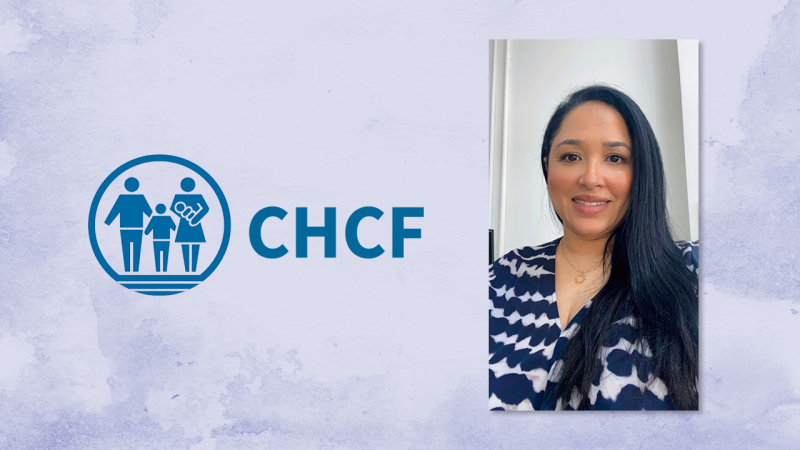By Judy Quinn, Writer
In support of Hispanic and Latine Heritage Month, Scholastic has donated 1,000 books to the Committee for Hispanic Children and Families (CHCF). Founded in 1982, CHCF is one of New York City’s oldest grassroots Hispanic organizations, combining direct service programs with advocacy and policy work. Its guiding vision: to ensure that Latino children, youth, and families have equitable access to opportunities to succeed, are empowered to realize their full potential, and are affirmed in their culture.
In June 2022, as part of an urgent effort on behalf of CHCF to address the need for increased support in child care, immigration, housing, and other social services, the organization opened a major new service center in the Bronx. CHCF staff is using the new office as a location for training providers, handing out baby food to the public, and taking one-on-one meetings for those who needed social service support in English and Spanish. CHCF is also among the group of nonprofits that offer early learning programs and activities for families with children from birth to age five through the City’s First Readers program, part of the New York City Council’s Early Literacy Initiative. The organization is also a member of the public-private partnership supporting NYC Mayor Eric Adams’s recently announced $2 billion investment over the next four years in early child care.
You can learn more about CHCF on its website and follow them on Twitter, Facebook, and Instagram.
Below is our interview with CHCF’s Ingrid Chungata, Chief Program Officer.
1) CHCF offers a host of important direct service programs – can you touch on these and their chief objectives?
Sure! CHCF has five primary function areas: Our Youth Development team provides academic and after-school programs to supplement students’ education. We have our Early Care & Education Institute, which provides professional development to family child care educators. Community Empowerment leverages our parent participation efforts to train residents to be leaders in their local communities. Policy and Advocacy works on progressive legislation around access to education. And our newest initiative is the Family Child Care Network, which supports a network of affiliated child care providers who serve infants and toddlers.
2) How are reading and literacy part of these objectives?
Literacy and reading are absolutely essential parts of our work. In our work with child care providers, we use materials and individualized coaching to design culturally responsive early childhood libraries that consider families, their cultures, and customs in adding reading materials. In addition, our educational team models strategies for effective read-aloud and how educators can encourage families to read to their children regularly. We provide families with reading materials, community resources, and special events highlighting the importance of early literacy and language acquisition.
For older kids, our after-school programs synchronize academics and extra-curriculum activities to integrate literacy in all aspects of programming. During after-school hours, our young people are doing anything from building a 3D model of the solar system to learning coding. By bringing literacy into every activity, participants receive added exposure to written instructional materials and learn that reading is an essential life skill.
3) Scholastic is donating books in the categories of Grades K-2, 3-5 and 6-8 – can you explain how these books will be used in your programs targeted to these age groups?
And we’re so grateful for the donation!
Scholastic’s donation of 1,000 books will be given to our 580 students currently attending the three-after-school programs for which we provide contracted services for in the Bronx: PS/MS 279, PS 59, and PS 226. Books donated to our young people will be distributed based on each child’s current reading level. In addition, each child attending our programs will receive a take-home literacy kit, including donated books and writing and drawing utensils.
4) How has the pandemic affected CHCF activities? For example, there have been those reports of declines in reading and match levels due to the pandemic, yet CHCF continues to help increase graduation/success rates in its target schools. What are the strategies used to make that happen? What are CHCF's plans to continue this success despite adversities in the future?
CHCF quickly adjusted our services and connections with the community and schools to virtual. Additionally, given our rapport with our families and communities, we continued to meet the ongoing and rising needs that families were facing during the pandemic; we worked with school leaders to ensure all families, even those outside of our direct contracted programs, were receiving critical information and access to resources. Meanwhile, CHCF’s Community Empowerment team continued the groundwork to distribute food, mental health kits, reading kits, cleaning supplies, and personal protection equipment.
When you’re already enmeshed deeply in a community, you’re more able to act quickly to meet the needs on the ground.
5) A goal within the CHCF mission is to strive for Hispanic families and children to be affirmed in their culture. Can you share some activities related to that objective? How are bilingual books or books with Hispanic focus (such as produced by Scholastic) helping with this aim?
Every facet of our organizational work drives towards affirming culture and language with children, families, and child care providers. All the books we purchase for distribution to children, parents, and providers are multilingual and affirm multiculturalism. During the pandemic, in fiscal years 2020 and 2021, we distributed 4,000 books across the five boroughs.
6) Anything else you'd like to mention?
CHCF is thrilled and grateful to have Scholastic donate 1,000 books to support our efforts and expand our work alongside City’s First Readers. We are so fortunate to have caught your attention. And feel free to reach out to us any time. We’re always ready!



